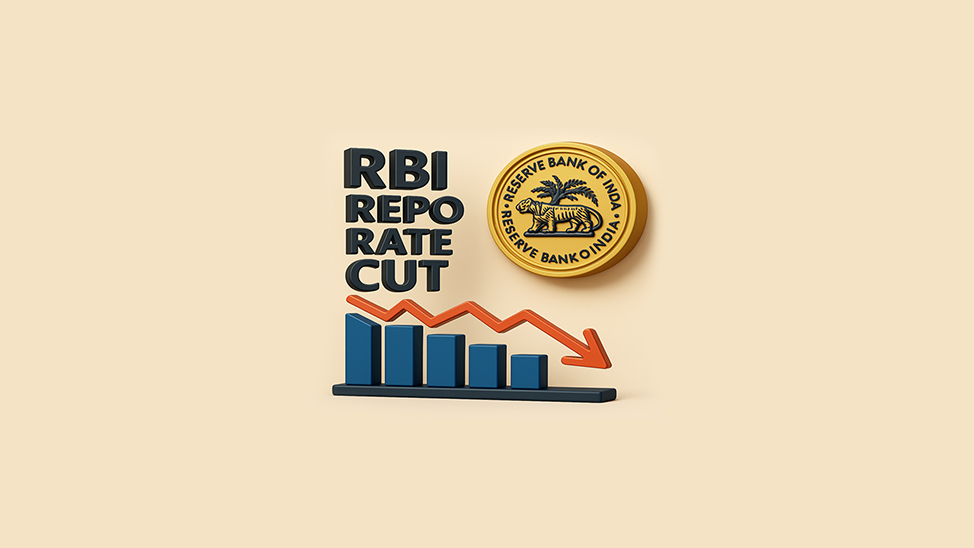Union Budget 2023 Highlights

- Published Date: February 01, 2023
- Updated Date: January 30, 2025
- By Team Choice
The Indian Union Budget 2023 focused on strengthening several facets of Amrit Kaal. This budget emphasises tax simplification, focus on jobs, and building a stable economy.
Notably, the budget consisted of measures for green growth, infrastructure development, enhancement of digital facilities, and targeted funding for different sectors.
The International Monetary Fund (IMF) projected India’s growth outlook at 6.1% for 2023. This statistic establishes India as the fastest-growing economy in the world. At the same time, IMF predicts the global economy to fall to 2.9%.
The Indian Finance Minister, Nirmala Sitharaman, highlighted the recognition of India as a bright spot in the world. Here are the main aspects and detailed information on the 2023 Union Budget.
India Union Budget 2023 Key Points
The 2023 budget size was proposed to be ₹ 45.03 lakh crores. Here are some essential points at a glance:
- No tax on income up to ₹ 7 lakhs per year in the ‘new tax regime’
- The old tax regime stays the same as earlier
- There is a hike of 16% in cigarettes
- Provision of interest-free loans to states for 50 years
- Capital outlay of ₹ 2.4 lakh crores for railways
- Infusion of ₹ 9,000 crores in revamped credit guarantee for MSMEs
- Priority capital of ₹ 35,000 crores for the energy transition
Simply put, the focus of budget 2023 revolved around some essential facets of the economy.
Priorities in the Indian Union Budget 2023
Green growth | Youth | Finance |
Infrastructure | Inclusive development | Fiscal management |
This presentation was the last full-fledged budget before the 2024 general elections. The budget garnered attention due to relief to taxpayers, investment towards a greener economy, and evident focus on capital expenditure.
Indian Union Budget 2023 Highlights – Detailed Segment Analysis
The 2023 budget covered key areas like taxation, start-ups, infrastructure, women empowerment, and sustainable development. Here are the main points under each vital segment.
1. Tax Proposals
The taxation changes are divided into two sections — direct and indirect.
Direct tax proposals
- The old tax regime has no changes.
- From this financial year, the new tax regime is set by default. Still, you have the choice to opt for the old income tax regime.
- There is no income tax up to earning of ₹ 7 lakhs per year under the new tax regime.
- The highest surcharge rate reduces from 37% to 25% in the new tax regime. This benefit is applicable for income above ₹ 5 crores.
- The standard tax deduction benefits extend to the new tax regime. This aspect applies to both pensioners and salaried classes.
- For non-government salaried employees, the tax exemption limit for leave encashment on retirement is increased to ₹ 25 lakhs.
Here are the income tax slabs under the new tax regime:
New Tax Regime Income Tax Slabs
Annual income amount | Taxation rate |
Up to ₹ 3 lakhs | 0% |
₹ 3 lakhs – ₹ 6 lakhs | 5% |
₹ 6 lakhs – ₹ 9 lakhs | 10% |
₹ 9 lakhs – ₹ 12 lakhs | 15% |
₹ 12 lakhs – ₹ 15 lakhs | 20% |
Above ₹ 15 lakhs | 30% |
Indirect tax proposals
- Hike of 16% on specific cigarettes.
- Customs duty on glycerine and crude is now 2.5%.
- One-year extension for concessional duty on lithium-ion cells.
- Customs duty on TV panel open cells is 2.5%.
- The import duty on silver bars undergoes a hike.
Here is a list of popular products that will become costly or less expensive:
Costlier | Less Expensive |
Cigarettes | Smartphones |
Luxury cars | Televisions |
Electric chimney | Electric vehicles |
Jewellery | Camera lens |
Imported toys | Bicycles |
2. Tax Alterations for Industries
The budget included schemes and enhanced tax limits for the corporate sector.
- New credit guarantee scheme (MSMEs) decreases the cost of credit by 1%.
- Tax rate of 15% for new co-operatives commencing manufacturing (till March 2024).
- Limit of ₹ 2 lakhs per member for cash loans and deposits by Primary Co-operative Agriculture and Rural Development Banks and Primary Agricultural Credit Society.
- The limit for TDS on withdrawing cash from co-operative societies is ₹ 3 crores.
- Start-ups receive an extension of one year for income tax benefits from the date of incorporation.
3. Changes or Additions in Saving Schemes
The budget for 2023 witnessed a couple of modifications and a major addition to saving schemes.
- Senior citizen savings scheme maximum deposit limit is now ₹ 30 lakhs (this limit was ₹ 15 lakhs earlier).
- The limit for Monthly Income Scheme (MIS) increased to ₹ 9 lakhs. In the case of a joint account, this limit is now ₹ 15 lakhs.
- Women can avail of the new Mahila Samman Saving Certificate. This scheme is a one-time venture valid till 2025.
4. Budget Allocations
From railways to defence, the Union Budget 2023 covers all the vital pillars of the Indian economy.
- There is a provision of ₹ 2.4 lakh crores outlay for railways.
- The increased defence budget is now ₹ 5.94 lakh crores.
- Defence capital expenditure has a separate allocation of ₹ 1.62 lakh crores.
- The credit guarantee for MSMEs is revamped to ₹ 9,000 crores.
- Urban Infra Development fund receives government support of ₹ 10,000 crores per year.
This table lays down the allocation for different ministries.
Table: Budget 2023 allocation figures (Source)
Name of Ministry | Allocation (in ₹ lakh crore) |
Defence | 5.94 |
Road Transport and Highways | 2.70 |
Railways | 2.41 |
Consumer Affairs, Food, and Public Distribution | 2.06 |
Home Affairs | 1.96 |
Chemicals and Fertilisers | 1.78 |
Rural Development | 1.60 |
Agriculture and Farmer’s Welfare | 1.25 |
Communications | 1.23 |
5. Boost to Digital Infrastructure
With a focus on refining digitisation in the country, the Union Budget 2023 had some crucial inclusions.
- National Digital Library will be set up for kids and adolescents.
- The DigiLocker services will improve in terms of scope.
- 100 labs will be set up in engineering institutes to develop 5G-based applications.
- An outlay of ₹ 7,000 crores for the e-courts project.
6. Education Sector
In addition to a National Digital Library, the 2023 budget introduced specific pointers intending to improve education in India.
- Teachers’ training will be revamped under the District Institutes of Education and Training.
- Encouragement to start physical libraries at ward and panchayat levels.
- Centres of Excellence in the Artificial Intelligence field will be set up.
- Provision for the establishment of new nursing colleges.
- Initiation of 740 residential schools based on the Eklavya model.
7. Agriculture and Co-operative Domain
Budget 2023 mentions inclusive development and includes the following points for this specific segment.
- Targeted funding of ₹ 20 lakh crores for animal husbandry, dairy, and fisheries.
- Set up 10,000 bio-input resource centres.
- An outlay of ₹ 6,000 crores under a PM Mastya Sampada Yojna sub-scheme for the fisheries sector.
- Development of digital public infrastructure.
- Set up of Agriculture Accelerator fund for supporting innovative rural area start-ups.
- Boost the production of horticulture crops of high value.
- Assistance for adaptation of natural farming in the upcoming years.
- A separate fund for the computerisation of credit societies.
- Mandatory requirement of 5% compressed biogas for relevant companies.
8. Social Schemes and Programs
From tourism to tribal welfare, the Indian budget for 2023 includes the following major schemes.
- PM Vishwa Karma Kaushal Samman is an assistance package for artisans.
- 'Pradhan Mantri Primitive Vulnerable Tribal Group' mission aims to improve socio-economic conditions with an allocation of ₹ 15,000 crores.
- Pradhan Mantri Kaushal Vikas Yojana 4.0 will cover courses like 3D printing, robotics, coding, etc.
- The Jan Vishwas Bill will amend 42 central acts to highlight trust-based governance.
- The PM Awaas Yojana receives an outlay of more than ₹ 79,000 crores.
- PM Garib Kalyan Ann Yojana to continue for another year until 2024. This initiative aims to provide food grains (free of cost) to certain households.
9. Health, Tourism, and Sports
This section covers the three important segments of the Indian economy.
Health
- Establishment of new nursing colleges in the country.
- Launch of Sickle Cell Anaemia mission.
- Promotion of pharmaceutical research via a new program.
- Availability of ICMR labs for joint public and private medical research.
Tourism
- Development of chosen 50 tourist destinations for national and global tourism.
- Encouragement of ‘Unity Mall’ in every state. This building can be in the state capital or a famous tourist attraction.
- Vibrant Villages Program for developing infrastructure in border villages.
Sports
- The Sports ministry receives ₹ 3397 crores (rounded off).
- Khelo India is still a priority program for the government.
10. Initiatives for Green Growth
One of the top priorities in the Indian Union Budget 2023 was to push green energy. For this purpose, the finance minister announced some crucial points.
- Promotion of natural farming via 10,000 bio-inputs resource centres.
- Establishment of 500 ‘waste to wealth’ plants.
- Notification of Green Credit Program under the Environment Protection Act.
- An outlay of ₹ 19,700 crores for the National Green Hydrogen mission.
- Focus on battery energy storage systems and special funds to replace old vehicles.
Noteworthy Mentions
The Union Budget 2023 also covered the business aspect through important announcements. For instance, you can use the PAN card as the common business identifier throughout the country. Also, a separate scheme, ‘Vivad Se Vishwas-2’, will be established for tackling commercial disputes.
Also, the initialisation of the Central Processing Centre can improve the pace of filing forms and documents that fall under the companies act.
These are all the vital details of India’s Union Budget 2023.
Recommended for you

RBI Repo Rate Cuts by 50 BPS to 5.50%

List Of Mutual Funds with No Exit Load

Aplab Ltd Right Issue 2025
